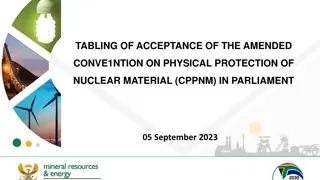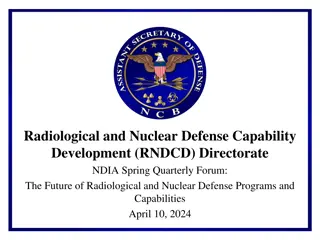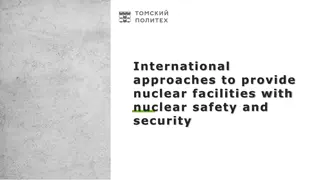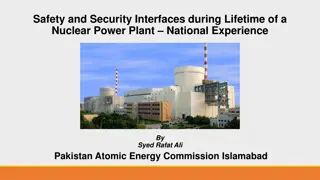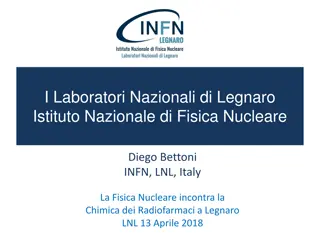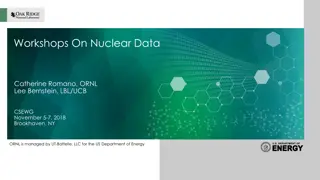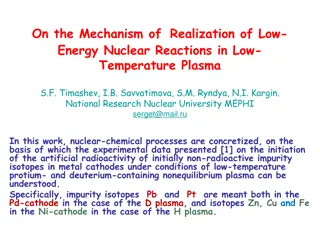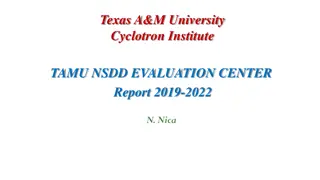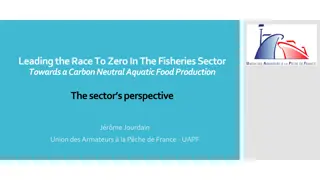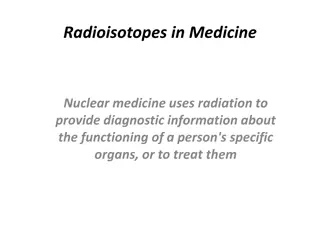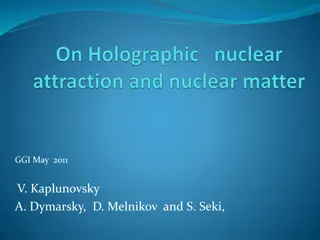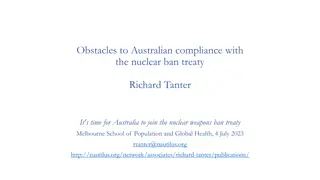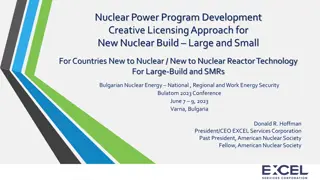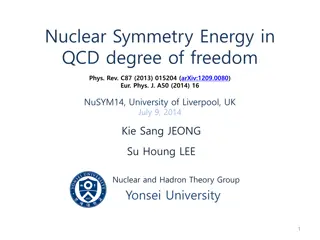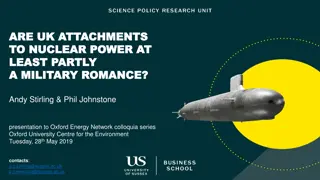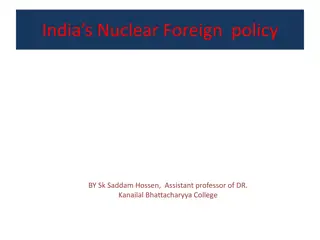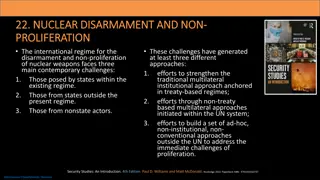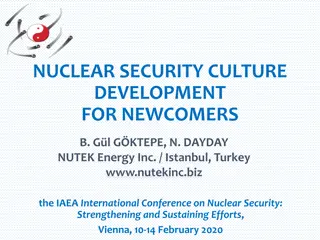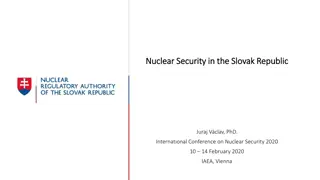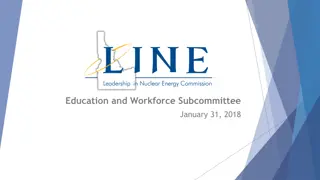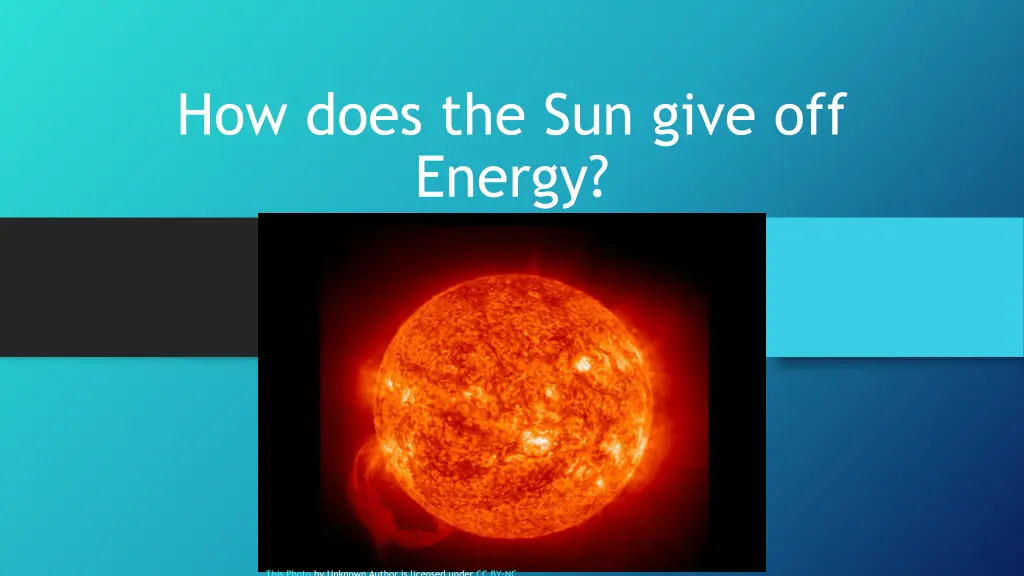
Understanding Nuclear Reactions and Energy Generation
Explore the fascinating world of nuclear reactions and energy generation from the Sun, delving into concepts like fusion, fission, and the differences between nuclear and chemical changes. Discover how protons, neutrons, and elements interact in these reactions, and learn about the immense energy produced through nuclear reactions.
Download Presentation

Please find below an Image/Link to download the presentation.
The content on the website is provided AS IS for your information and personal use only. It may not be sold, licensed, or shared on other websites without obtaining consent from the author. If you encounter any issues during the download, it is possible that the publisher has removed the file from their server.
You are allowed to download the files provided on this website for personal or commercial use, subject to the condition that they are used lawfully. All files are the property of their respective owners.
The content on the website is provided AS IS for your information and personal use only. It may not be sold, licensed, or shared on other websites without obtaining consent from the author.
E N D
Presentation Transcript
How does the Sun give off Energy? This Photo by Unknown Author is licensed under CC BY-NC
What does the term Nuclear reaction make you think of? The Nucleus of the Atom!! What do you think reacts in a Nuclear Reaction? Protons and Neutrons! What reacts in a combustion reaction or other typical chemical reactions? Electrons! Which will generate MORE Energy: NUCLEAR REACTIONS!!!
Protons and neutrons are attracted to each other by the strong nuclear to the strong force is greater than the repulsion due to electrostatic force. In a stable nucleus, the attraction due As elements get heavier, they become more unstable. Extra neutrons must be present in the nucleus (like glue) to increase stability Nuclear reactions DO form new elements which makes them Nuclear changes occur when a nucleus becomes unstable. force. by increasing the strong force. DIFFERENT from chemicalreactions
WHAT MAKES NUCLEAR CHANGES DIFFERENT FROM CHEMICAL CHANGES? Some nuclei can become unstable by artificial transmutation, where a nucleus is bombarded (or amounts of energy as nuclear mass is Nuclear reactions can produce enormous Examples of naturally occurring nuclear reactions include alpha and beta decay, shot) with a particle that creates instability and converted into energy (E=mc2)!!! Nuclear reactions change the protons of an atom s nucleus the element will change!! and fission and fusion. causes radioactive decay.
THINK ABOUT THE WORDS FUSION & FISSION When you FUSE two objects, what do you do? Join them together! How about the word Fission? To break apart. Talk with your neighbor- what is the difference between Nuclear Fusion and Nuclear Fission??
Example of Nuclear Fission nuclear fission 23592U + 10n 9038Sr + 14354Xe + 310n
Example of Nuclear Fusion nuclear fusion 21H + 31H 42He + 10n
COMPARE the 2 types of Nuclear Reactions! 21H + 31H 42He + 10n nuclear fusion nuclear fission 23592U + 10n 9038Sr + 14354Xe + 310n
Nuclear Fusion and Fission Lighter nuclei undergo fusion to become more stable . and heavier nuclei become more stable by fission.
NUCLEAR FUSION: Process of combining 2 lighter and smaller Nuclei into 1 Heavier Nucleus This CHANGES the element and forms a new type of atom. An ENORMOUS amount of ENERGY is releaed in the process
WHERE DOES NUCLEAR FUSION OCCUR? In the Cores of STARS (Like our SUN!!) under EXTREME conditions of VERY high temperature and pressure. As you read in the article, the FUSION of 2 Hydrogen nuclei forms a Helium nucleus in the sun: 21H + 11H 32He How does this process release a LOT of energy?
FUSION AND E = MC2 Einstein s famous equation E = mc2 (mass times the speed of light squared) shows us that matter can be converted into energy. This releases vast amounts of energy from a very small amount of matter. Think about C2 its large (remember: C=3.0x108 m/s) Fusion is not a chemical reaction it IS a nuclear reaction
NUCLEAR REACTIONS https://www.youtube.com/watch?v=-22tna7KHzI
COMPARE AND CONTRAST H2 + O2 H2O this is a chemical equation H + H + H + H He this is a nuclear equation So what is the big difference?
WHAT CAUSES FUSION IN STARS OR THE SUN? Stars (like our sun) are formed when a very large cloud of gas condenses under gravity. The mass involved is enormous which means the force of gravity also very large. This causes intense pressures in the center of the cloud and results in very high temperatures. Once fusion begins the star s life is regulated by the balance between gravity pulling in and the explosive energy of fusion pushing out.
WHERE DOES THE ENERGY THATS RELEASED COME FROM? A CHANGE IN MASS THAT IS CONVERTED TO ENERGY!!
TWO HYDROGEN-1 NUCLEI COMBINE TO PRODUCE A HYDROGEN-2 NUCLEUS . AND THEN Describe what happens in the second and third nuclear equations. How are nuclear equations fundamentally different from chemical equations?
RADIOACTIVE DECAY EQUATIONS (HOW TO UNDERSTAND THEM) Alpha decay equation (lose 2p, 2n): Beta decay equation (n p+e-): parent isotope daughter isotope

